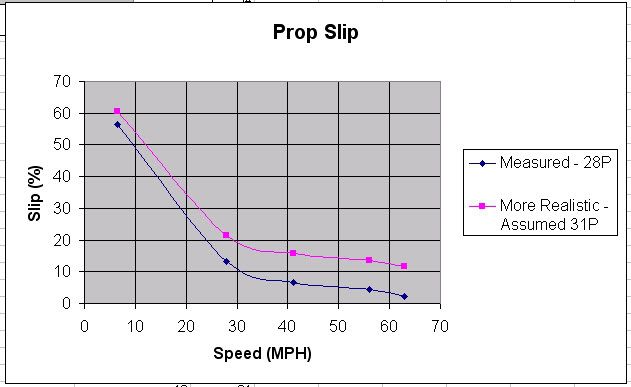45Auto
Commander
- Joined
- May 31, 2002
- Messages
- 2,842
Anybody have any ideas on how to accurately measure actual prop slip? My calculated slip works out to about 2% at WOT. I very seriously doubt if my boat is that efficient, figure something in the 12% range would be more realistic.

Drive is a Bravo 3 (twin counter-rotating props) with 28? pitch props. As you can see, standard prop slip calculations give me about 2% slip at WOT. If I assume (***-U-ME) that the props are effectively 31? pitch, it puts the slip up around 12% which I feel is more realistic.
I understand that cup on the props can be the equivalent of 1? of additional pitch. I?m wondering if the efficiency of the counter-rotating props could be responsible for the additional 2? of pitch I need to account for to get the calculations to work out.
Wish I could afford a Bravo 2 lower to stick on it and see what difference it would make!
Any thoughts or ideas from the prop gurus?

Drive is a Bravo 3 (twin counter-rotating props) with 28? pitch props. As you can see, standard prop slip calculations give me about 2% slip at WOT. If I assume (***-U-ME) that the props are effectively 31? pitch, it puts the slip up around 12% which I feel is more realistic.
I understand that cup on the props can be the equivalent of 1? of additional pitch. I?m wondering if the efficiency of the counter-rotating props could be responsible for the additional 2? of pitch I need to account for to get the calculations to work out.
Wish I could afford a Bravo 2 lower to stick on it and see what difference it would make!
Any thoughts or ideas from the prop gurus?




















